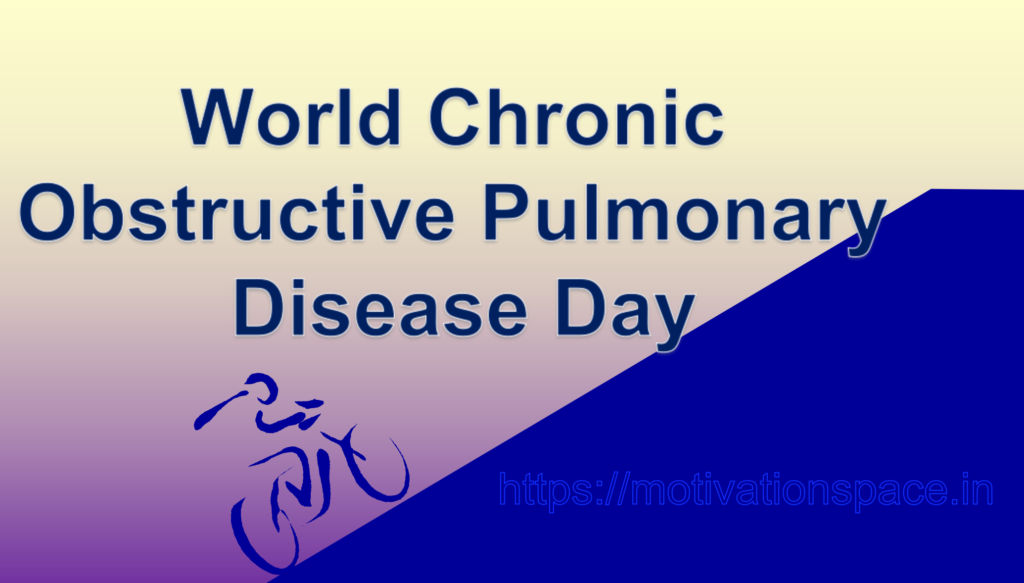Contents of this article
World Chronic Obstructive Pulmonary Disease (COPD) Day, observed every year on the third Wednesday of November, is a day of global significance. It is dedicated to raising awareness about COPD, a chronic lung disease that affects millions of people worldwide. On this day, medical professionals, organizations, and communities come together to educate the public about COPD, its risk factors, prevention, and the importance of early detection and management. In this blog, we’ll explore the significance of World COPD Day, delve into the understanding of COPD, and provide examples of initiatives that contribute to its prevention and management.
The Significance of World COPD Day:
World COPD Day carries several key significances:
Awareness and Education:
It is an opportunity to increase awareness about COPD, a condition that often goes undiagnosed or is misunderstood. Education is key to early detection and proper management.
Advocacy for Lung Health:
The day encourages advocacy for lung health and highlights the need for effective measures to prevent and manage COPD.
Solidarity:
It unites people worldwide in a common cause, emphasizing that COPD is a global health challenge that requires collective action.
Prevention and Early Intervention:
World COPD Day promotes preventive measures and early intervention to reduce the impact of COPD on individuals and healthcare systems.
Understanding COPD
Chronic Obstructive Pulmonary Disease (COPD) is a chronic lung disease that progressively limits the flow of air into and out of the lungs. The primary characteristics of COPD are chronic bronchitis and emphysema, both of which restrict airflow and make it difficult to breathe. Here are key components of COPD:
Chronic Bronchitis:
In chronic bronchitis, the airways become inflamed and produce excess mucus. This leads to persistent coughing and difficulty in breathing.
Emphysema:
Emphysema is characterized by the gradual destruction of the air sacs in the lungs, reducing their ability to expand and contract effectively.
Common Symptoms:
COPD is often marked by symptoms like shortness of breath, chronic cough, increased production of mucus, wheezing, and chest tightness.
Risk Factors:
Smoking is the most common cause of COPD. Other risk factors include exposure to environmental pollutants, occupational dust and chemicals, and genetic predisposition.
Progressive Nature:
COPD is a progressive disease, meaning it worsens over time. However, early diagnosis and management can help slow its progression and improve the patient’s quality of life.
Prevalence:
COPD is a major global health concern, affecting millions of people. It is currently the third leading cause of death worldwide.
Examples of COPD Prevention and Management Initiatives:
Smoking Cessation Programs:
Efforts to prevent COPD often focus on smoking cessation programs, targeting those at risk due to tobacco use. These programs provide resources and support to help individuals quit smoking.
Early Detection Campaigns:
Many countries run awareness campaigns to encourage early detection of COPD. These campaigns educate the public about the symptoms of COPD and the importance of seeking medical help if they experience any of these symptoms.
Lung Function Testing:
Lung function tests, such as spirometry, are used to diagnose and monitor COPD. Many healthcare facilities offer free or low-cost lung function testing on World COPD Day to encourage early diagnosis.
Patient Support Groups:
COPD patient support groups provide a community for individuals living with the disease. These groups offer emotional support, information, and resources for managing COPD.
Government Initiatives:
Governments play a critical role in the prevention and management of COPD. They implement policies to reduce air pollution, enforce smoking bans in public places, and allocate resources for healthcare and awareness programs.
Innovative Therapies:
Advances in medical science have led to the development of new therapies and medications to manage COPD symptoms and slow its progression.
Rehabilitation Programs:
Pulmonary rehabilitation programs are designed to improve the overall well-being and quality of life for COPD patients. These programs often include exercise regimens and education on self-management.
Success Stories:
To highlight the impact of World COPD Day, let’s explore some success stories and initiatives from around the world:
Australia’s Lung Foundation:
The Lung Foundation Australia runs annual World COPD Day campaigns, offering resources for early diagnosis, patient support, and education. Their initiatives have contributed to increased awareness of COPD and reduced stigma surrounding the condition.
Canada’s COPD Management Programs:
In Canada, numerous provinces have implemented COPD management programs, providing patients with access to personalized care, education, and resources. These programs have significantly improved the quality of life for COPD patients.
The UK’s NHS Stop Smoking Services:
The National Health Service (NHS) in the United Kingdom offers comprehensive smoking cessation services. These services have led to a decrease in smoking rates, reducing the risk of COPD in the population.
India’s ‘Help Me Breathe’ Campaign:
In India, the ‘Help Me Breathe’ campaign focuses on increasing awareness and early detection of COPD. Through mass media and community engagement, it has made a significant impact in educating the public about the condition.
Conclusion for World Chronic Obstructive Pulmonary Disease Day:
World Chronic Obstructive Pulmonary Disease Day serves as a critical reminder of the global impact of this chronic lung disease and the importance of prevention and early management. By raising awareness, advocating for lung health, and implementing preventive measures, we can make strides in reducing the prevalence and impact of COPD. Additionally, the success stories and initiatives mentioned above exemplify the progress that can be achieved when individuals, communities, healthcare professionals, and governments unite to combat COPD.
The battle against COPD is not just a medical one; it is a collective endeavor to protect the respiratory health and well-being of millions of individuals. As we observe World COPD Day, let us continue our efforts to reduce the burden of COPD and improve the lives of those affected by this condition, ensuring they can breathe easy and live their lives to the fullest. I hope you found this article helpful related to the World Chronic Obstructive Pulmonary Disease Day. you may drop a comment below or contact us for any query related to the contents of this article.


